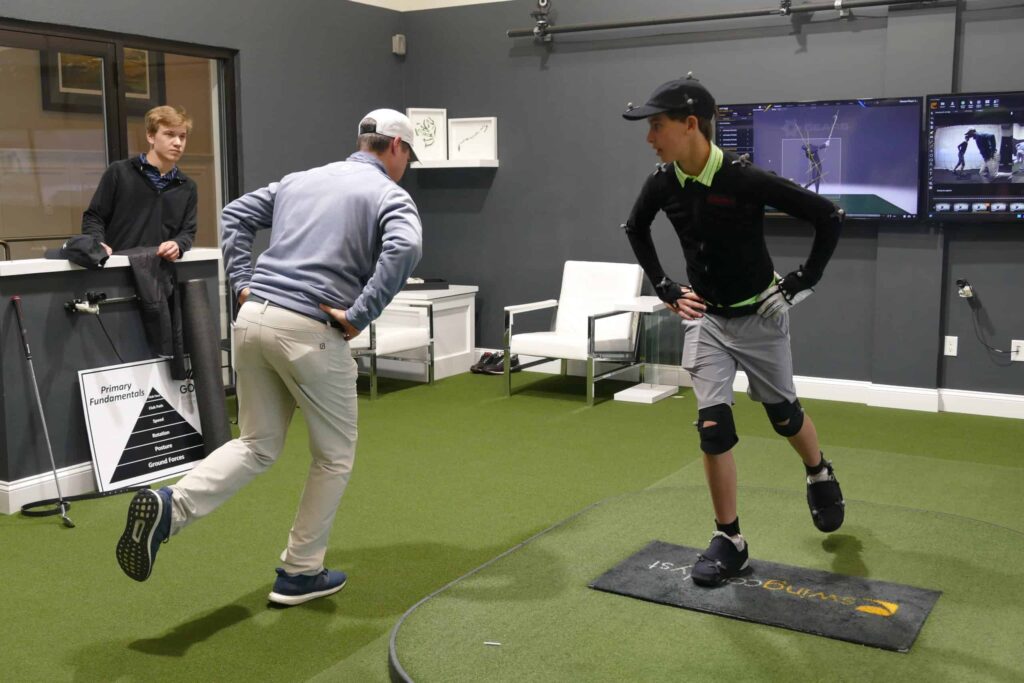Unlike most sports, golf is not considered reactive. In games like basketball, tennis, or soccer, athletes are constantly responding to a moving ball, an opponent’s decision, or a dynamic situation. Their reactions are automatic, instinctual, and time-sensitive. But in golf, the ball sits still. The course is quiet. No one is chasing you down. You have complete control—at least in theory.
That stillness, however, can be deceiving. For many golfers, especially at the competitive level, the time and space before a shot can become a breeding ground for anxiety, indecision, and over-analysis. Instead of reacting instinctively, players begin calculating, second-guessing, and mentally rehearsing every possible outcome. The very nature of the game gives them too much time to think, and when thoughts turn negative or mechanical, performance suffers.
From a mental perspective, one of the most powerful shifts a golfer can make is to begin treating golf as if it were a reactive sport. While the ball may not move, and the opponent isn’t pressing, your mindset can still mirror the simplicity, focus, and freedom that reactive athletes experience. By intentionally designing your routines and practices to promote reactivity rather than over-control, you reduce the window for mental interference and create space for trust, flow, and athletic instinct.
Here are three proven ways to train golf as a reactive sport:
1. Use a Shot Clock in Practice
One of the biggest differences between reactive sports and golf is the amount of time available. Reactive athletes are forced to respond in seconds. Golfers, on the other hand, often linger too long—lining up the shot, visualizing, rehearsing, resetting, and sometimes freezing.
By introducing a “shot clock” into your practice sessions, you can rewire your decision-making process to become quicker and more instinctive. Give yourself a 10–15 second window from when you pick a club to when you make your swing. This forces you to trust your preparation, commit to the shot, and remove unnecessary steps that invite doubt. Over time, you’ll become more decisive, less hesitant, and more comfortable performing under pressure.
2. React to a Trigger
In reactive sports, the athlete doesn’t consciously decide when to move—the environment provides the trigger. A tennis player sees the serve and reacts. A quarterback sees the defense shift and throws. In golf, since the environment is still, you must create your own trigger.
This is where your pre-shot routine becomes essential. The final step in your routine should always be a consistent cue to act—a physical motion or verbal cue that signals your transition from planning to performance. That might be a final waggle, a step into the shot, a deep breath, or a self-command like “go” or “commit.” Once the trigger happens, you don’t think—you react. You’ve done your prep. Now it’s time to swing. Conditioning this response builds mental momentum and helps shut down last-minute overthinking.
3. Randomize Shot Selection
Traditional golf practice often becomes repetitive. You hit 10 7-irons to the same target, stand in one spot, and groove your swing. While that might feel productive, it doesn’t mimic the reactive nature of playing a round—where every shot is different, and conditions change constantly. To build reactivity, create variability in your practice. Hit different clubs to different targets, mix up lies, and introduce time limits between shots. One effective drill is to have a friend or coach call out a random shot—“High fade with a 5-iron to the back left flag”—and give you 5 seconds to execute. This forces you to adapt quickly and commit fully. Just like in reactive sports, your body learns to respond rather than over-control.
This kind of training not only improves your ability to adjust on the fly but also reinforces one of the most important mental skills in golf: acceptance. When every shot is different, perfection becomes less relevant, and reacting with confidence becomes the priority.
Why This Matters
Reactivity doesn’t mean rushing or skipping important steps. It means trusting your preparation, committing to decisions, and swinging with freedom. It means using your time efficiently and resisting the temptation to over-engineer your performance. Golf is often described as a game of inches, but mentally, it’s a game of moments—and how you handle the moment before the shot determines the one after it.
When golfers learn to simplify their thoughts and create a rhythm that mirrors the reactive qualities of other sports, they tend to play more freely, recover from mistakes faster, and stay more present in the round. Their pre-shot routine becomes a ritual of readiness, not a ritual of fear.
As the legendary sports psychologist Dr. Bob Rotella often told players who struggled with this very challenge: “See ball. Hit ball.”
Simple. Reactive. Free.


